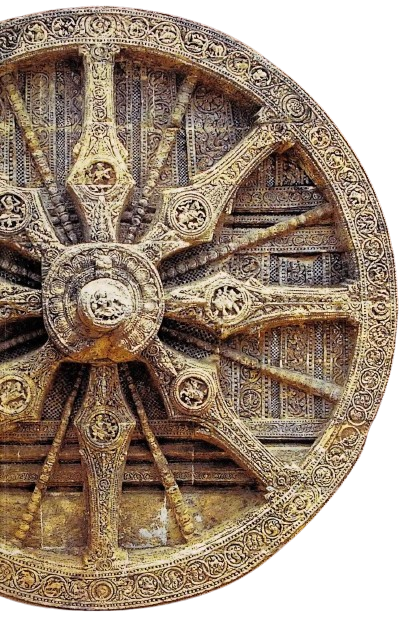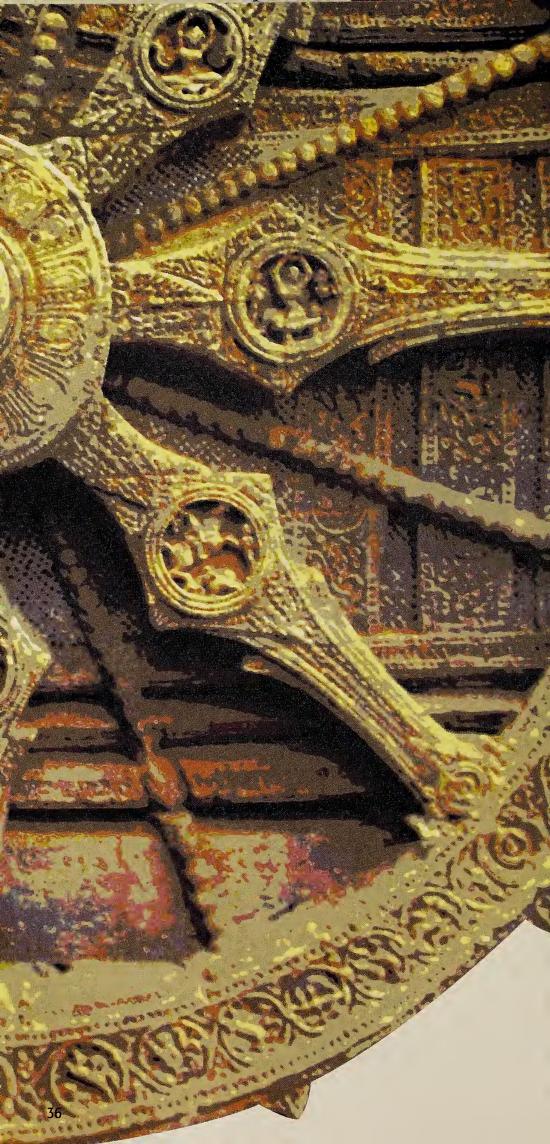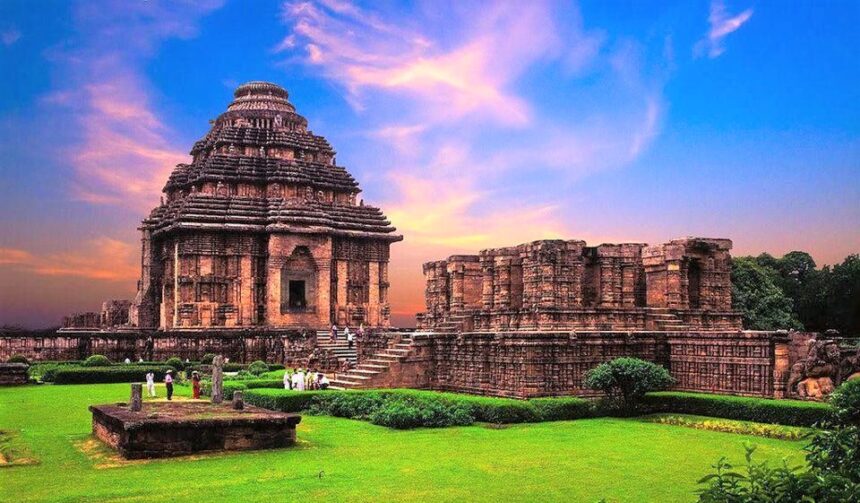Vedic Science Behind the Sun Temple of Konark
Scientific Marvel in form of Sun Temple of Konark
Scheduled for publication on June 9, 2024, as part of HinduInfoPedia.org’s Sunday series “Reflections and Personal Insights” on Vedic Science, this post explores the Sun Temple of Konark, also known as the “Black Pagoda.” This 13th-century architectural marvel, erected under King Narasimhadeva I of the Eastern Ganga Dynasty, showcases not just the spiritual sanctity but also the advanced scientific knowledge of its time. The temple’s precise celestial alignments and its intricately carved details reveal a sophisticated grasp of astronomical and cosmological concepts, presenting it as a significant testament to Vedic Science. Today, the Sun Temple stands as an iconic emblem of Vedic astronomy and architecture, exemplifying how ancient builders harmonized spiritual insights with scientific principles, weaving them into the very fabric of their architectural achievements. Through this exploration, we delve into the temple’s unique integration of art and science, highlighting its role in advancing our understanding of the cosmos and Vedic traditions.
Background of Vedic Science
The Sun Temple of Konark, often referred to as the “Black Pagoda,” stands as a beacon of ancient Indian ingenuity, reflecting the profound depths of Vedic Science. Erected in the 13th century by King Narasimhadeva I of the Eastern Ganga Dynasty, this architectural masterpiece serves as both a religious sanctum and a testament to the sophisticated scientific knowledge of its time. The temple’s intricate carvings, precise alignments, and astronomical significance encapsulate the profound understanding of the cosmos that Vedic Science imparts.

Historical Context of Sun Temple’s Construction
The Sun Temple of Konark was constructed in the 13th century, a period marked by significant socio-political and technological advancements in the region governed by the Eastern Ganga Dynasty. This era was characterized by relative stability and prosperity, which allowed for the flourishing of arts and architecture under the patronage of King Narasimhadeva I. The king commissioned the temple not only as a place of worship but also as a monumental display of the dynasty’s power and piety.
The construction of the Sun Temple coincided with a period of intense religious and cultural synthesis in India. Hinduism was integrating with various local traditions, influencing the religious landscape and the architectural expressions associated with it. The choice to dedicate the temple to Surya, the Sun God, highlights the importance of solar worship in the region, which was seen as a symbol of life, energy, and royal power.
Technologically, the period saw significant advancements in engineering and architectural techniques. The design and construction of the Sun Temple utilized innovative methods such as the interlocking stone system, which provided structural stability without the use of mortar. This technique, combined with the detailed iconography and the astronomical alignment of the temple’s structure, showcases the high level of precision and scientific knowledge that existed at the time.
The socio-political stability of the Eastern Ganga Dynasty provided the resources and labor necessary for such an ambitious project. It also allowed for the congregation of skilled artisans, architects, and astronomers from various parts of India, fostering an environment of intellectual and artistic exchange that greatly contributed to the temple’s construction. This collaborative effort not only reflected the dynasty’s dedication to Hindu religious ideals but also their commitment to advancing the architectural heritage of India.
The Sun Temple of Konark stands as a testament to the ingenuity of its creators and the vibrant cultural ethos of 13th century India, encapsulating the confluence of spirituality, science, and art that defined this golden era of Indian history.
Sun Temple: A Marvel of Vedic Science
The Sun Temple at Konark, designed as a giant stone chariot with intricately carved wheels, stands as a testament to the architectural and artistic brilliance of 13th-century India.

The Sun Temple at Konark, designed to mirror the grandeur of a celestial chariot, features twelve pairs of elaborately carved wheels and is drawn by seven majestic horses. Beyond its symbolic representation of Surya, the Sun God, the temple integrates artistic magnificence with functional ingenuity. The design and orientation of the temple directly enhance the solar worship practices, reflecting the spiritual and ritualistic significance of solar cycles in Vedic traditions.
Intricate Wheel carvings

The construction of the temple reflects an exquisite understanding of both astronomy and geometry, evident from the strategic orientation of the temple. This alignment ensures that the first rays of the rising sun shine directly through the main entrance on equinoctial days, illuminating the inner sanctum and symbolizing the spiritual illumination Vedic Science seeks to impart. The wheels’ detailed carvings are not only visually striking but also serve to measure time with remarkable accuracy, a testament to the advanced scientific knowledge of the era.
Beyond its role as a timekeeper, the temple architecture symbolically encapsulates Vedic cosmology. The chariot’s design, with its horses and wheels, articulates the perpetual motion of life and the universe, reflecting the interconnectedness of time, celestial cycles, and human existence as envisioned in Vedic teachings.
This architectural marvel does more than house worship; it stands as a dynamic embodiment of Vedic principles, harmonizing scientific precision with spiritual depth. The advanced construction techniques, such as the use of interlocking stones without mortar and the sophisticated systems for water drainage and air ventilation, showcase not only the ingenuity but also the practical application of Vedic scientific principles in creating enduring and harmonious living spaces.
Architectural and Astronomical Precision
The Sundials of the Sun Temple: Precision in Timekeeping
One of the most extraordinary features of the Sun Temple at Konark is the architectural integration of twelve pairs of elaborately carved wheels, which function not only as symbolic elements but also as highly precise sundials. Each wheel is intricately designed, with detailed carvings that serve both artistic and functional purposes. These wheels represent the twelve months of the Hindu calendar, mirroring the annual cycle of seasons dictated by the sun’s movement.

The architectural integration of the sundials within the Sun Temple at Konark showcases an extraordinary merger of form and function. These sundials, crafted from intricately carved stone wheels, are divided into eight segments per traditional Indian timekeeping practices. As the sun moves across the sky, the shadows cast by the spokes provide a method of measuring time with remarkable precision, a testament to the temple builders’ advanced understanding of both astronomy and mathematics. This not only highlights their ability to track celestial movements but also illustrates their capability to embed these into daily religious practices.
These sundials not only told time but also communicated deeper spiritual meanings, integrating temporal measurements with cosmic symbolism, thus harmonizing daily life with universal rhythms.
Astronomical Alignment and Cosmic Connection
The temple’s alignment with the solar cycle is another marvel of Vedic architecture. Positioned meticulously so that the first rays of the sun at dawn strike the main entrance at specific times of the year, the temple architecture aligns perfectly with the equinoxes and solstices. This strategic alignment is not just for aesthetic beauty; it serves a deeper ritualistic purpose, symbolizing the divine connection between the earthly domain of the temple and the celestial realm of the sun.
This orientation is critical in Vedic cosmology, which places great importance on the sun’s path across the sky, known as the ecliptic. The temple’s design reflects an intimate understanding of this path, which is central to the calculation of celestial events and the structuring of the Vedic calendar. This profound connection is highlighted during the equinoxes when the sun aligns directly with the main entrance, casting a beam of light that illuminates the deity’s sanctum, signifying the spiritual awakening and enlightenment that is central to Vedic thought.
Symbolic and Cosmic Significance
The precise alignment of the Sun Temple and its functionality as a sundial encapsulate a broader principle in Vedic Science—the unity of the cosmos and human endeavor. This principle asserts that human constructions, when aligned with cosmic laws, not only achieve technical greatness but also acquire spiritual significance. The temple thus serves as a bridge between the mundane and the divine, a physical structure that not only marks the passage of time but also serves as a living reminder of the cosmic order.
In summary, the Sun Temple’s use of sundials and its precise solar alignment are not merely technical feats; they are vibrant expressions of an ancient worldview that saw science and spirituality as inseparable. The temple, through its architectural sophistication and cosmic orientation, stands as a profound testament to the advanced state of Vedic Science, showcasing an era when astronomical precision and spiritual values were seamlessly integrated into the fabric of daily life and religious practice.
Symbolism and Vedic Knowledge
The seven horses pulling the chariot represent the seven days of the week, highlighting the solar cycle’s influence on timekeeping. The spokes of each wheel, designed to act as sundials, exemplify the builders’ expertise in Vedic timekeeping methods. The detailed carvings on the temple walls depict various aspects of life, cosmic events, and deities, all intricately linked to Vedic principles and cosmology.
These carvings are not just artistic expressions but educational tools, illustrating complex concepts of astronomy, mythology, and daily life. They serve as a visual representation of Vedic knowledge, making the temple an open book of ancient science and spirituality.
Inexplicable Precision and Modern Science
Despite modern advancements in technology and engineering, reproducing the precision and artistic detail of the Sun Temple remains a formidable challenge. The ability of the builders to integrate art, symbolism, and science into a cohesive structure is a feat that continues to baffle historians and scientists alike. The use of interlocking stones, without mortar, to create such a massive and enduring structure further underscores the advanced engineering skills derived from Vedic principles.
The temple’s construction techniques, including the precision of stone carving and the astronomical alignments, reflect a level of sophistication that modern science still strives to fully understand and replicate. The knowledge encoded in this temple demonstrates a seamless blend of spirituality and scientific inquiry that was characteristic of Vedic Science.
Reflections on intricacies of Sun Temple of Konark
The Sun Temple of Konark stands as a profound testament to the confluence of Vedic Science and architectural genius. Its design, deeply embedded with cosmic principles, offers more than just visual splendor; it encapsulates a legacy of astronomical precision and artistic finesse that continues to inspire and educate. Through the temple’s structure, we witness the harmonious blend of spiritual beliefs and scientific practices of ancient India.
This architectural marvel does more than bridge the ancient with the modern—it inspires us to integrate holistic perspectives into our current scientific and architectural endeavors. The detailed carvings and precise alignments within the temple serve as living testaments to the ingenuity of its creators and their advanced understanding of celestial phenomena. These features not only highlight the temple as a pinnacle of Vedic architectural achievement but also challenge us to explore the interconnectedness of science and spirituality.
Furthermore, the construction techniques employed, such as the use of interlocking stones and the integration of functional sundials, remind us of the creative synergy that arises when cultural heritage is aligned with natural laws. This ancient wisdom urges contemporary scholars and practitioners to learn from past techniques, underscoring the importance of sustaining this heritage for future generations.
As we reflect on the Sun Temple’s contributions to both the past and the present, it becomes clear that this monument is not merely a relic but a source of continuous inspiration. It encourages us to pursue a deeper understanding of the universe and to respect the profound insights offered by Vedic Science, promoting a more enlightened approach to our own technological and spiritual quests.
In conclusion, as we delve into the mysteries of the Sun Temple, we do more than honor the legacy of its creators; we engage in a journey that enriches our understanding of the vast tapestry of human achievement and the timeless relevance of ancient wisdom in our modern world.
Feature Image: Click here to view the image.
Related Blog
https://hinduinfopedia.org/vedic-maths-illustrated-the-sundial-at-konark-sun-temple/



Leave a Reply